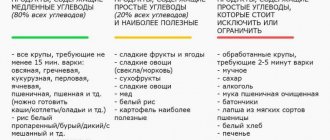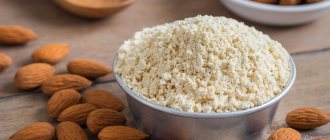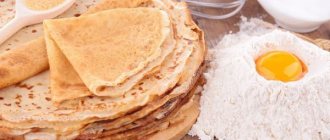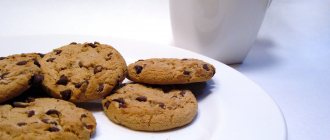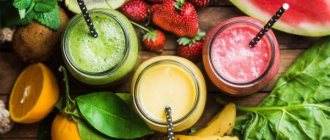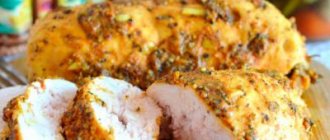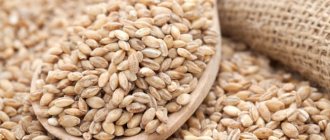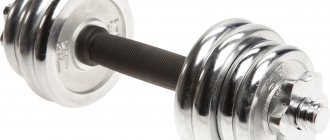General rules
In recent years, fat-protein diets with extremely low carbohydrate content have become very popular.
Let's consider the question of what a low-carbohydrate diet is, its features and purpose. Dietary systems with carbohydrate restriction are used for various purposes: for weight loss, for diabetes mellitus , for the treatment of obesity , for hypertension . Low-carbohydrate diets (the so-called keto diets ) are also indicated for athletes involved in a sport such as billballing, which uses a special nutrition system - drying, which allows you to quickly gain relief and expressiveness of the body by reducing the fat layer and increasing lean muscle mass. And each of the intended purposes of diets with a reduced carbohydrate component has its own rules and many nuances.
Carbohydrates are a large class of chemical compounds, including simple (monosaccharides) and complex (polysaccharides) carbohydrates, each of which has different effects on metabolism:
- simple carbohydrates - are quickly absorbed in the body and are broken down into monosaccharides (glucose/fructose) during metabolism. They are quickly absorbed in the body and, if they are supplied in excess, and there is no need for them, they are converted into intra-abdominal and subcutaneous fat. When they are utilized, the blood sugar level quickly rises, which provides a feeling of satiety, which passes just as quickly. Products containing simple carbohydrates include sugar, sweet fruits, honey, jam, preserves, confectionery, candies and other sweets;
- complex carbohydrates (starch, glycogen , pectin , fiber, inulin ) are absorbed slowly in the body (the duration is 3-5 times longer). They have a complex structure and include many monosaccharides. They are broken down in the small intestine, and their absorption is slowed down by fiber. Complex carbohydrates increase blood sugar slowly, and therefore the body is saturated with energy evenly. Products containing complex carbohydrates (fiber, starch, pectin) include whole grain bread, white rice, cereals and cereals made from them, pasta, bananas, pineapple, dried fruits.
In essence, a low-carbohydrate diet models metabolic processes in the body that are identical to fasting, when metabolism is reoriented to gluconeogenesis , in which the process of glucose formation occurs from non-carbohydrate components (glycerol, lactic/pyruvic acid, amino acids , fatty acids). In the initial period of fasting, the metabolism of amino acids (protein) increases, which reaches a certain level and persists for 25-30 days, and then the use of protein as “metabolic fuel” slows down sharply, since its reserves in the body can only decrease to a certain level. At the same time, the mobilization and oxidation of free fatty acids accelerates.
At this stage, under conditions of severe carbohydrate deficiency, energy metabolism switches from carbohydrate to lipid metabolism, in which the energy substrate is the oxidation of fatty acids with the production and accumulation of ketone bodies. Thus, a low-carbohydrate, high-fat diet induces benign ketosis. And mobilization from the glycogen and the relatively rapid development of a feeling of satiety contributes to a faster rate of body weight loss.
When using diets of this type, it should be taken into account that the low content of carbohydrates and dietary fiber in the diet causes insufficient intake of vitamins and minerals into the body. Therefore, diets that suppress appetite against the background of rapid ketosis, even with the additional introduction of necessary components into the diet, can be prescribed for a limited period. When following low-carbohydrate diets, it is important to remember that the mechanism of formation of ketosis bodies is triggered by limiting carbohydrates in the diet to 100 g/day.
Hypocarbohydrate diet for weight loss
It is based on a sharp restriction in the diet of the amount of foods containing predominantly simple carbohydrates and, to a lesser extent, foods high in complex carbohydrates. At the same time, the protein content in the diet corresponds to the physiological norm, and the fat consumption rate is moderately reduced. Accordingly, the total calorie content of the daily diet is reduced to 1700-1800 Kcal/day. Limiting carbohydrates in weight loss diets below 120-130 g is not recommended or acceptable when using fasting diets for a short period. The choice of products - sources of carbohydrates is determined by the required degree of reduction in the energy value of the daily diet, the duration of the diet and the specified goal.
In the diet, sugar and sugar-containing products, confectionery products, sweet drinks, honey, ice cream are excluded, bakery and pasta products made from premium flour, polished rice, semolina are limited, and in cases where it is necessary to further reduce the energy value of the diet (up to 1000- 1200 kcal/day) excludes other cereals, potatoes, some fruits and berries (grapes, bananas,) dried fruits. The main source of carbohydrates should be products containing vitamins and minerals, rich in dietary fiber - dietary types of bread with the addition of bran and crushed grains, ground or wholemeal bread, legumes, cereals, preferably whole grains or partially retaining the shell (unpolished rice, buckwheat, barley/oatmeal porridge), vegetables, non-sweet fruits and berries.
It is important to understand that an anti-carbohydrate diet with the exclusion/limitation of sugar and sugar-containing foods in the diet does not mean that sugar contributes more to weight gain/ obesity than other carbohydrates. The presence of sugar in the diet is not important for reducing body weight in cases where the energy value of the diet is less than energy expenditure. The point of choosing carbohydrate sources is that products containing complex carbohydrates have a higher nutritional value (create conditions for the natural activity of intestinal microflora, stimulate the motor function of the gastrointestinal tract, adsorb toxic compounds, cholesterol ) and allow for more stable and long-lasting satiety than sugar-containing ones. products.
Low-carbohydrate diet - table of foods with quantitative carbohydrate content
To create a low-carbohydrate diet, it is important to understand the quantitative content of carbohydrates in certain foods. This information is reflected in the table below.
| Product name | Carbohydrate content |
| Bagels | 58 |
| Boiled pasta | 25 |
| Wheat porridge | 27 |
| White sugar | 105 |
| Armenian lavash | 56 |
| White bread | 51 |
| Bread Borodinsky | 39 |
| Green peas | 12 |
| Milk chocolate | 62 |
| Boiled white rice | 30 |
| Marmalade | 70 |
| Honey | 77 |
| Buckwheat | 29 |
| Dates | 68 |
| Peanut | 15 |
| Shortbread cookies | 58 |
| Hazelnut | 15 |
| Sunflower seeds | 18 |
| Sesame seeds | 20 |
| Walnuts | 11 |
| Watermelon | 9 |
| Eggplant | 5 |
| Cornflakes | 75 |
| Parsley | 8 |
| Tomatoes | 4 |
| Sour cream | 3 |
| Sweet pepper | 5 |
| Boiled potatoes | 16 |
| Boiled beets | 7 |
| Fruit kefir | 5 |
| Whole milk | 12 |
| Banana | 22 |
| Milk ice cream | 25 |
| Cashew | 25 |
| Carrot | 5 |
| Grape | 15 |
| Raspberries, strawberries | 5 |
| Tangerines, oranges | 7 |
| Apricot compote | 23 |
| Pear compote | 15 |
| Apples | 10 |
| Red/black currant | 7 |
| Cherry | 12 |
| Dried rose hips | 26 |
The main principles of a low-carb diet are:
- Reducing the diet of carbohydrates (mostly simple) to 120-130 g/day with a physiological norm of protein content and moderate restriction of fats (up to 70-75 g/day), mainly due to the reduction of solid animal fats. The ratio of complex and simple carbohydrates should be approximately 95 to 5. At least 50% of the protein in the diet should be provided by animal products: eggs, lean fish, meat, cottage cheese, seafood. The calorie content of the daily diet should vary between about 1700-1800 Kcal/day.
- The main intake of complex carbohydrates should be in the first half of the day. At dinner, you should give preference to protein foods.
- Limiting the consumption of salt and salty foods.
- Meals are split, no snacks between meals.
- Prepare food using dietary culinary methods for processing foods - boil, steam, stew, bake. Frying food is not allowed.
- Drink at least 2 liters/day of free fluid.
To increase the effectiveness of a low-carbohydrate diet, it is recommended to practice fasting days, since they accelerate the mobilization of fat from the depot and contribute to the restructuring of metabolism.
However, it is necessary to understand that the energy value of fasting days varies at the level of 500-700 kcal/day and has a limited range of products, which leads to a deficiency of essential food nutrients . Therefore, fasting days can be used no more than 1-2 times a week. There are extremely many options for fasting days - mainly protein (meat, kefir, fish, cottage cheese), carbohydrate (fruit and vegetable), combined - relatively close in the composition of nutrients and products to a balanced diet.
Below are some options for fasting days:
- Kefir-curd diet - 50 g of low-fat cottage cheese and 200 ml of yogurt or 1% fat kefir, 5 times a day;
- Meat (fish) diet - 50-70 g of boiled lean meat (fish), 5 times a day and 100-150 g of vegetables (cucumbers, cabbage, tomatoes) 5 times a day.
Vegetable and fruit diets have a particularly low energy value (250-300 kcal), which can be recommended both for adult men and women with a regular diet, and for vegetarians.
- Salad diet - 250 g of raw fresh vegetables in the form of salads 5 times a day, if necessary, with the addition of 10 g per day of vegetable oil or 10% sour cream.
- Cucumber diet - 300 g of fresh cucumbers, 6 times a day (1.5 kg).
- Apple diet - 250 g of raw or baked apples 6 times a day (total 1.5 kg).
On fasting days, you are allowed to drink still mineral water, rosehip decoction without sugar, and tea. Salt is limited to 2-3 g/day. On fasting days, it is mandatory to take one tablet of multivitamin-mineral preparations ( Vitrum , Complivit , Multimac , Vitamax , Vitaspectrum , Unicap , Multitabs , Teravit and others).
Low carbohydrate diet for diabetes
For diabetes mellitus, a low-carbohydrate diet is included in a complex of therapeutic measures. Such patients are prescribed a therapeutic diet, Table No. 9 according to Pevzner (with normal weight). The diet provides for a reduction in carbohydrates in the diet, but the overall decrease in the carbohydrate component is not so pronounced and amounts to 3.5 g per 1 kg of the patient’s weight (on average 300-350 g/day). The energy value of the diet is 2500 kcal. The menu is limited mainly to simple carbohydrates with a physiologically normal content of proteins (95-100 g/day) and fats (75-80 g/day).
The diet provides for a limited content of sodium chloride (up to 10-12 g/day), extractives and cholesterol . The content of foods containing lipotropic substances and dietary fiber increases (seafood, beef, veal, cottage cheese, whole grain cereals, wholemeal bread, lean fish, vegetables/fruits). If you are overweight, the carbohydrate content in the diet is reduced to 120 g per day, and the caloric content of the diet is reduced to 1700 kcal ( Table 9A ). The diet is fractional with an even distribution of carbohydrates.
What about starchy vegetables, beans and fruits: can they be used in diet dishes?
If you're having trouble remembering which vegetables are starchy and therefore high in carbohydrates, here are some simple clues:
- Most vegetables grown above ground are considered "non-starchy" and therefore contain fewer carbohydrates (such as cruciferous vegetables such as broccoli, leafy greens, peppers, chard and kale). Some squashes are also considered non-starchy, including spaghetti squash and zucchini. Vegetables that grow underground, also called “root vegetables,” are usually richer in starch and carbohydrates (eg potatoes, carrots, turnips, beets).
- This is not an ironclad rule. For example, regular pumpkins grow above the ground and are high in carbohydrates, but you can use these traits as a starting point.
While most root vegetables and fruits are not generally considered “low carb,” many are still nutrient-dense, low in sugar, and make a good addition to any diet. In fact, strained, crushed or pureed vegetables and fruits can in many cases serve as substitutes for sweeteners or even cereals. A good example is shredded cauliflower.
The same applies to legumes or legumes, for example, chickpeas can be made into flour or hummus, and then they make an excellent spreadable side dish that goes well with many low-carb dishes. These foods are rich in antioxidants, provide you with essential fiber, and make your food sweeter, which helps overcome the addiction of sugar, which allows you to avoid adding it to your food separately. For this reason, I recommend including the following fruits and starchy vegetables in your diet:
- Berries – such as strawberries, blackberries, blueberries or raspberries
- Cherry
- Cranberry
- Kiwi
- Citrus
- Melon
- Sweet or purple potatoes
- Swede
- Beet
- Celery
- Parsnip
Legumes and legumes - such as chickpeas, black beans, mung beans, adzuki, etc. They are also not considered low-carb foods, but are healthy foods in moderation. If you decide to include legumes or grains in your diet, I recommend pre-soaking and sprouting them before cooking. This helps release more protein, vitamins and minerals and makes them more easily digestible.
Varieties
A more strict type of diet for weight loss includes the low-carbohydrate diet according to Khairullin . Its peculiarity is that in the diet the amount of fat and protein foods is not limited with a sharp restriction of carbohydrates: no more than 6-8 g per day in the first days with a gradual increase in their content to 20-40 g. The course of dietary nutrition is divided into 4 stages , each of which is aimed at solving certain problems, not only at losing extra pounds, but also at consolidating the result.
- The stimulating stage involves a sharp reduction in carbohydrates to 0-10 g per day. Its duration is 14 days. The main task is to launch the ketosis mechanism and the fewer carbohydrates contained in the diet, the faster the goal is achieved. At this stage, drinking plenty of fluids (up to 3 liters per day), taking a vitamin-mineral complex and dietary fiber are recommended.
- Stage of ongoing weight loss - the weekly diet provides for an increase in the daily carbohydrate component by 5 g. At the same time, the rate of weight loss will slow down. Gradually increase the daily amount of carbohydrates to a level at which weight loss slows down a little, but does not stop at all. As a rule, in different people this occurs at a level of consumption of 20-40 g of carbohydrates per day. When you stop losing weight, reduce carbohydrates, thereby activating the process of ketosis. You must determine for yourself exactly at what level of carbohydrate consumption the weight loss process continues and at what level it stops. For some, this level will be 15-30 g per day (15 g - you continue to lose weight, 30 g - weight loss stops), and for others - 40-60 g.
- Pre-maintenance stage - begins when about 3-5 kg remains before the set goal. At this stage, the weight loss process must be slowed down, which is achieved by increasing the carbohydrate content in the daily diet by 10 g each and maintaining this rate of weight loss (1.5-2 kg per month) for 2-3 months. At the same time, you must determine at what level of carbohydrate intake weight loss stops and at what rate of weight loss is minimal. At this stage, you should clearly know at what level of carbohydrate intake you stop losing weight and at what level you begin to gain weight.
- The maintenance stage is nutrition at the level of carbohydrate consumption that does not lead to weight gain, on average it is from 50 to 100 g of carbohydrates.
In principle, it is not necessary to use the entire system; you can stay in the first, stimulating stage until you reach the weight you need. Once you reach your goal, begin gradually increasing your carbohydrate intake by 5 grams per week.
Cereals
Amaranth
This cereal has been highly valued since ancient times. Contains a special substance squalene, which can resist the destructive effects of free radicals, being an antitumor agent. This product will be very useful for nourishing muscles, and its history makes you want to learn more about all the miraculous properties of amaranth. You can prepare this grain for breakfast, replacing regular cereal.
Almond flour
By replacing the usual baking flour with carefully ground almonds, you can prepare delicious desserts. Such baking will not harm the contours of the body and will not destroy the results of hard work. In particular, its composition is rich in vitamin E and monounsaturated fats necessary for heart health.
Peanut flour
It is peanuts ground into powder, which during dehydration become less fatty (almost 2 times). Contains a lot of protein, beneficial microelements and substances necessary for the body. Gluten free. This flour is added to cocktails, made into a paste for toast, or used for baking.
Alternatives to wheat flour can be found to suit your taste. You can add coconut flour, wheat germ, and hazelnut flour to the above healthy products.
Authorized Products
The basis of the diet consists of lean red meats, river and sea fish (herring, tuna, salmon) in any culinary preparation, rabbit and poultry meat (chicken, turkey), seafood, chicken eggs, vegetable oils (olive, corn, sunflower), porridge (buckwheat, wheat, oatmeal and rice).
The diet should include hard cheese, sour cream, cottage cheese and other high-fat dairy products, butter and green vegetables rich in fiber: carrots, cabbage, zucchini, onions, tomatoes, eggplant, melons, celery stalks, zucchini, green salad leaves, cucumbers, green beans.
You can also include walnuts, flax seeds, peanuts, and olives in your diet. Good sources of complex carbohydrates include boiled or baked potatoes, bran, legumes (beans, lentils, peas, chickpeas), whole grain baked goods and bread.
Table of permitted products
| Proteins, g | Fats, g | Carbohydrates, g | Calories, kcal | |
Vegetables and greens | ||||
| eggplant | 1,2 | 0,1 | 4,5 | 24 |
| peas | 6,0 | 0,0 | 9,0 | 60 |
| green peas | 5,0 | 0,2 | 13,8 | 73 |
| zucchini | 0,6 | 0,3 | 4,6 | 24 |
| cabbage | 1,8 | 0,1 | 4,7 | 27 |
| broccoli | 3,0 | 0,4 | 5,2 | 28 |
| carrot | 1,3 | 0,1 | 6,9 | 32 |
| cucumbers | 0,8 | 0,1 | 2,8 | 15 |
| olives | 0,8 | 10,7 | 6,3 | 115 |
| iceberg lettuce | 0,9 | 0,1 | 1,8 | 14 |
| tomatoes | 0,6 | 0,2 | 4,2 | 20 |
| beans | 7,8 | 0,5 | 21,5 | 123 |
| green beans | 2,8 | 0,4 | 8,4 | 47 |
| lentils | 24,0 | 1,5 | 42,7 | 284 |
Nuts and dried fruits | ||||
| nuts | 15,0 | 40,0 | 20,0 | 500 |
| flax seeds | 18,3 | 42,2 | 28,9 | 534 |
Cereals and porridges | ||||
| buckwheat | 4,5 | 2,3 | 25,0 | 132 |
| oatmeal | 3,2 | 4,1 | 14,2 | 102 |
| millet porridge | 4,7 | 1,1 | 26,1 | 135 |
| brown rice | 7,4 | 1,8 | 72,9 | 337 |
Bakery products | ||||
| whole grain bread | 10,1 | 2,3 | 57,1 | 295 |
Dairy | ||||
| Ryazhenka | 2,8 | 4,0 | 4,2 | 67 |
Cheeses and cottage cheese | ||||
| cottage cheese | 17,2 | 5,0 | 1,8 | 121 |
Meat products | ||||
| boiled beef | 25,8 | 16,8 | 0,0 | 254 |
| veal | 19,7 | 1,2 | 0,0 | 90 |
| rabbit | 21,0 | 8,0 | 0,0 | 156 |
| bacon | 23,0 | 45,0 | 0,0 | 500 |
Sausages | ||||
| sausages | 10,1 | 31,6 | 1,9 | 332 |
| sausages | 12,3 | 25,3 | 0,0 | 277 |
Bird | ||||
| boiled chicken breast | 29,8 | 1,8 | 0,5 | 137 |
| turkey | 19,2 | 0,7 | 0,0 | 84 |
Eggs | ||||
| soft-boiled chicken eggs | 12,8 | 11,6 | 0,8 | 159 |
Fish and seafood | ||||
| seafood | 15,5 | 1,0 | 0,1 | 85 |
| canned fish | 17,5 | 2,0 | 0,0 | 88 |
| herring | 16,3 | 10,7 | — | 161 |
| cod (liver in oil) | 4,2 | 65,7 | 1,2 | 613 |
| tuna | 23,0 | 1,0 | — | 101 |
Oils and fats | ||||
| vegetable oil | 0,0 | 99,0 | 0,0 | 899 |
| butter | 0,5 | 82,5 | 0,8 | 748 |
| linseed oil | 0,0 | 99,8 | 0,0 | 898 |
Non-alcoholic drinks | ||||
| mineral water | 0,0 | 0,0 | 0,0 | — |
| green tea | 0,0 | 0,0 | 0,0 | — |
| * data is per 100 g of product | ||||
Eggs
Eggs, as a low-carb product, are worth mentioning separately. Egg white is a source of amino acids, and the yolk contains iron, phosphorus, selenium, fat-soluble vitamins and B vitamins.
- How to take glutamine - calculation of dosage, time of administration and instructions on how to properly use sports supplements in sports (115 photos)
What foods contain gluten - a list of the richest and most unobvious foods containing gluten + 125 photos
- Casein - rules of administration, benefits, harm and instructions for use. Reviews and reviews of the best manufacturers
1 egg can compensate up to 14% of the daily protein requirement, and egg white is well absorbed by the body.
Fully or partially limited products
With a low-carbohydrate diet, the consumption of sugar and products containing it, sweets, baked goods, honey, halva, chocolate, jam, cookies, dried fruits (raisins, dates, figs, prunes, dried apricots), condensed milk is completely prohibited/sharply limited in the diet.
Consumption of white wheat bread, rolls, pasta, gingerbread, waffles, cakes, ice cream, carbonated drinks, sweet dairy products, bananas, grapes, crackers, beer, sweet fruits, milk, caffeine-containing products, sweet and semi-sweet wines, fried potatoes is not allowed. Semolina porridge is prohibited from porridges. Fatty meats, smoked meats, lard, bacon, and juices from sweet fruits are excluded from the diet.
Table of prohibited products
| Proteins, g | Fats, g | Carbohydrates, g | Calories, kcal | |
Vegetables and greens | ||||
| fried potato | 2,8 | 9,5 | 23,4 | 192 |
| radish | 1,2 | 0,1 | 3,4 | 19 |
| turnip | 1,5 | 0,1 | 6,2 | 30 |
| beet | 1,5 | 0,1 | 8,8 | 40 |
Fruits | ||||
| figs | 0,7 | 0,2 | 13,7 | 49 |
Berries | ||||
| grape | 0,6 | 0,2 | 16,8 | 65 |
Nuts and dried fruits | ||||
| raisin | 2,9 | 0,6 | 66,0 | 264 |
| dates | 2,5 | 0,5 | 69,2 | 274 |
Flour and pasta | ||||
| pasta | 10,4 | 1,1 | 69,7 | 337 |
| pancakes | 6,1 | 12,3 | 26,0 | 233 |
| vareniki | 7,6 | 2,3 | 18,7 | 155 |
| dumplings | 11,9 | 12,4 | 29,0 | 275 |
Bakery products | ||||
| buns | 7,2 | 6,2 | 51,0 | 317 |
| wheat bread | 8,1 | 1,0 | 48,8 | 242 |
Confectionery | ||||
| jam | 0,3 | 0,2 | 63,0 | 263 |
| jam | 0,3 | 0,1 | 56,0 | 238 |
| candies | 4,3 | 19,8 | 67,5 | 453 |
| cake | 3,8 | 22,6 | 47,0 | 397 |
| jam | 0,4 | 0,2 | 58,6 | 233 |
| halva | 11,6 | 29,7 | 54,0 | 523 |
Cakes | ||||
| cake | 4,4 | 23,4 | 45,2 | 407 |
Chocolate | ||||
| chocolate | 5,4 | 35,3 | 56,5 | 544 |
Raw materials and seasonings | ||||
| mayonnaise | 2,4 | 67,0 | 3,9 | 627 |
| honey | 0,8 | 0,0 | 81,5 | 329 |
| sugar | 0,0 | 0,0 | 99,7 | 398 |
Dairy | ||||
| condensed milk | 7,2 | 8,5 | 56,0 | 320 |
| cream | 2,8 | 20,0 | 3,7 | 205 |
| fruit yogurt 3.2% | 5,0 | 3,2 | 8,5 | 85 |
Meat products | ||||
| fatty pork | 11,4 | 49,3 | 0,0 | 489 |
| salo | 2,4 | 89,0 | 0,0 | 797 |
| bacon | 23,0 | 45,0 | 0,0 | 500 |
Sausages | ||||
| smoked sausage | 28,2 | 27,5 | 0,0 | 360 |
Fish and seafood | ||||
| fried fish | 19,5 | 11,7 | 6,2 | 206 |
Alcoholic drinks | ||||
| white dessert wine 16% | 0,5 | 0,0 | 16,0 | 153 |
| vodka | 0,0 | 0,0 | 0,1 | 235 |
| cognac | 0,0 | 0,0 | 0,1 | 239 |
| liquor | 0,3 | 1,1 | 17,2 | 242 |
| beer | 0,3 | 0,0 | 4,6 | 42 |
Non-alcoholic drinks | ||||
| cola | 0,0 | 0,0 | 10,4 | 42 |
| coffee with milk and sugar | 0,7 | 1,0 | 11,2 | 58 |
| Pepsi | 0,0 | 0,0 | 8,7 | 38 |
| energy drink | 0,0 | 0,0 | 11,3 | 45 |
Juices and compotes | ||||
| compote | 0,5 | 0,0 | 19,5 | 81 |
| grape juice | 0,3 | 0,0 | 14,0 | 54 |
| * data is per 100 g of product | ||||
Durum wheat pasta
Pasta made from durum wheat flour is marked on the package with the letter A. The fact is that such a cereal contains more paste than high-calorie starch. However, there are other symbols - B and C, which indicate the production of products from soft varieties of cereals.
- For a low-carb diet, you can only eat pasta with the symbol “A”.
- In dry form, the calorie content of the product per 100 grams ranges from 300 to 370 kcal (indicated on the package), but in boiled form, their nutritional value drops by more than 1/3.
The highest quality manufacturers are Italians, since their products contain water, flour and salt.
Russian manufacturers still add flour from soft varieties, as well as egg yolk and vegetable oil, which adds nutritional value.
Low-carb diet menu (Meal mode)
Low-carbohydrate diet, weekly menu involves the use of permitted products. Data on the quantitative content of carbohydrates in certain products allows you to create your own individual dietary menu, both for every day and for the week. Below are some menu options.
Option 1
| Breakfast |
|
| Dinner |
|
| Afternoon snack |
|
| Dinner |
|
| For the night |
|
Option 2
| Breakfast |
|
| Dinner |
|
| Afternoon snack |
|
| Dinner |
|
| For the night |
|
Option 3
| Breakfast |
|
| Dinner |
|
| Afternoon snack |
|
| Dinner |
|
| For the night |
|
Beverages
Cold tea
Of course, bottled green or black teas with additives are a questionable product and the composition is sometimes overloaded with harmful components. But you can prepare this drink yourself and take it with you. This is an excellent thirst quencher. It is better to refrain from adding sugar. And chilled green tea has a powerful antioxidant effect and accelerates the fat burning process.
Tomato juice
Unlike orange juice, tomato juice contains half as much sugar and only 10 g of carbohydrates per glass of drink. We are talking only about natural juice that does not contain harmful sweeteners and a huge number of additives. It has been proven that tomato juice helps athletes recover faster and even relieve inflammation!
Low Carb Diet Recipes
First meal
Below are some dishes that can be used on a low-carb diet and the same recipes for diabetics can be used in the diet of dietary table No. 9 .
Vegetable soup with beef meatballs
Beef, vegetable broth, vegetable oil, carrots, onions, broccoli (cauliflower), chicken protein, garden herbs.
Grind the beef into minced meat, add chicken protein, onions, pepper, dill, salt and form into meatballs. Place cabbage, carrots, and onions, sautéed in vegetable oil, into the broth; after the broth boils, place the meatballs in it. Cook until done, serve with herbs.
Vegetarian borscht
Cabbage, sour cream, potatoes, carrots, beets, bell peppers, garlic, onions, herbs, vegetable oil, salt, tomato paste.
Cut the potatoes into strips or pieces and place in boiling water. Chop and fry the onion in vegetable oil, grate and fry carrots, sweet peppers and beets separately. Combine everything in a frying pan, add tomato paste and simmer. Once the potatoes are ready, add the contents of the pan to the pan. Finely chop the cabbage and put it in the pan. Add seasonings, salt, squeeze out the garlic. Let it boil and brew. Serve with sour cream.
Second courses
Chicken cutlets with cheese and herbs
The meat of one chicken breast, minced in a blender, without skin. Add to the minced chicken: two finely grated onions and carrots, white bread soaked in milk, 1 egg, 100 grams of grated cheese, 2 tablespoons of sour cream. Everything is thoroughly mixed and placed in the refrigerator for 1 hour. Next, form the cutlets and steam them. Serve with greens.
White fish with vegetables
We make a cross-shaped cut on the tomato and lower it into boiling water. Remove the skin and remove the seeds. We cut peppers, onions, garlic, garden herbs. Sauté onions and garlic in a frying pan, add peppers, tomato, turmeric, basil, ground black pepper, parsley and simmer for a few minutes. Squeeze out the lime juice. The sauce is ready! Place the white fish fillet in a baking dish, pour in the sauce and bake at 180° for 20 minutes.
Beverages
Dried fruits compote
Compote can be made from various combinations of dried fruits; you can add rose hips, ginger, cinnamon, nutmeg and fructose. Take 500 grams of dried fruit, 2.5 liters of water, 1 g of citric acid.
Add dried fruits thoroughly washed and soaked in boiling water to the water brought to a boil and let them boil for twenty minutes, add citric acid, and fructose if desired. Let's brew.
Spices
To give a dish or dessert a unique flavor, all kinds of spices are used:
- Turmeric;
- Saffron;
- Peppers;
- Cinnamon;
- Ginger;
- Basil;
- Khmeli-suneli;
- Apple vinegar;
- Cocoa powder;
- Soy sauce.
Seasonings will help create a feeling of fullness, and they contain virtually no carbohydrates.
Contraindications
Renal failure , heavy physical labor, age under 18 years, gastrointestinal diseases ( gastritis , enteritis / colitis , ulcers ), pregnancy and lactation, endocrine diseases, chronic constipation , cardiovascular diseases, acute infectious diseases, gout , old age, osteoporosis , atherosclerosis , ischemic heart disease.
Expert opinion
A low-carb diet involves consuming varying amounts of carbohydrates daily (about 40 grams for women and about 60 for men). With long-term practice, this can lead to the undesirable results mentioned above.
It is known that eating a balanced diet is beneficial for health. But any diet is an example of nutrition that is always NOT balanced. It will always lack some of the nutrients necessary for the body to normal levels: carbohydrates, proteins, fats. Diet is medicine. But medicine cannot be taken forever. This is a temporary measure. But after accepting it, everyone has two options: you can return to your old habits (which led to illness and gaining extra pounds), or you can start eating healthy, balanced, and rationally. Most go the first route. And this is natural: both science and practice have long proven that 95% of people are not able to maintain their weight after losing weight. This, alas, is the “law of nature”.
But to take the second path and maintain normal weight and health, these same 95% need the help of weight loss specialists, psychologists and psychotherapists. Using special patented techniques, these professionals can instill in you correct eating behavior in the form of a whole series of useful habits, which will relieve your brains, nerves, and will center, changing and making your whole life easier.
Just imagine how calmly and joyfully all normal people live on healthy habits, who do not think about how many calories and carbohydrates they just ate, but simply eat what and as much as they want every day without the slightest stress - and at the same time maintain the correct size and weight throughout their lives.
Low-carb diet: reviews and results
As practice shows, a low-carbohydrate diet, reviews of people who have lost weight on it and the results vary significantly for everyone.
- “... I don’t know if you can really lose weight by 5-7 kg in two weeks on a carbohydrate diet or if this is just advertising that the forum for those who want to lose weight is filled with. I tried to follow this diet twice, but the result was very modest - 3 kg, although I complied with all the basic requirements. Apparently, a low-carb diet is not for me";
- “... Low-carb eating is a great way to lose weight. I tolerate the diet very easily, although the amount of carbohydrates in the diet is only 90-100 g, the feeling of hunger is slightly expressed. The only depressing thing is the need to carefully calculate the carbohydrate content in the diet.”
What are carbohydrates
Carbohydrates (glycides) are substances of organic origin consisting of carbon and water. These substances are an integral part of all living things: plants and animals. They are divided into simple and complex, where simple are monosaccharides and disaccharides, and complex are oligosaccharides and polysaccharides.
Monosaccharides (fast carbohydrates) have the ability to quickly dissolve and be absorbed into the blood, sharply increasing blood sugar. Products containing monosaccharides have a high glycemic index and cause the production of large amounts of insulin, which provokes the occurrence of a disease such as type II diabetes.
Type II diabetes mellitus is a disease in which resistance (insensitivity) of cells to insulin occurs.
Complex carbohydrates (slow) are gradually absorbed into the blood, subsequently breaking down into monosaccharides. They have a low glycemic index. But no matter what carbohydrates are called, they are very high in calories, and their large consumption leads to weight gain and obesity.
pros
The arguments in favor look like this:
- Instant weight loss is one of the main benefits of eating a diet based on the lowest carbohydrate foods. Food rich in protein and fat, with virtually no carbohydrates, leads to rapid dehydration. As a result, weight is quickly lost and fat burning is accelerated. On average, a week of a protein diet brings relief from 5-6 kg. We'll talk about the disadvantages of such nutrition below.
- Many diets make you tired of having to constantly monitor the number of calories you eat. But in the case of the Atkins or Dukan nutrition system, calories do not play a role.
- A diet low in carbohydrates is attractive due to its diversity. Such programs are especially popular with avid meat eaters, who get the opportunity to eat a large number of their favorite dishes.
- Dietary restrictions do not mean you need to starve. Allowed foods are digested slowly, leaving you feeling full for a long time.
Final Thoughts
Low-carb diets can help you lose weight quickly and significantly improve your health. And, as you learned, this especially applies to getting rid of sugar addiction, constant fatigue, heart disease and diabetes.
And all you have to do is include more non-starchy vegetables (like leafy greens or cruciferous vegetables).
In addition, start eating more healthy fats, such as coconut or olive oil, butter and hard cheeses. Eat more lean meats and especially plenty of seafood, and don't forget eggs.
Also consume carbohydrate sources such as nuts, seeds, beans, legumes and some starchy vegetables in moderation.
Use those 50 low carb foods we talked about and also use those simple recipes you've learned.
If you found this article helpful, please share it with others!
Useful video
Even diabetics are recommended to eat a low-carb diet. What can you eat and what dishes can you prepare? Answers in the video:
Thus, for those who want to get rid of extra pounds, a table of foods for a low-carb diet will be useful. By creating a diet using this table, you will be able to quickly lose weight and stabilize your weight.
Proper nutrition speeds up metabolic processes, reduces insulin levels, testosterone, and removes excess fluid. At the same time, it is useful and allows you to saturate the body with necessary micro- and macroelements.
